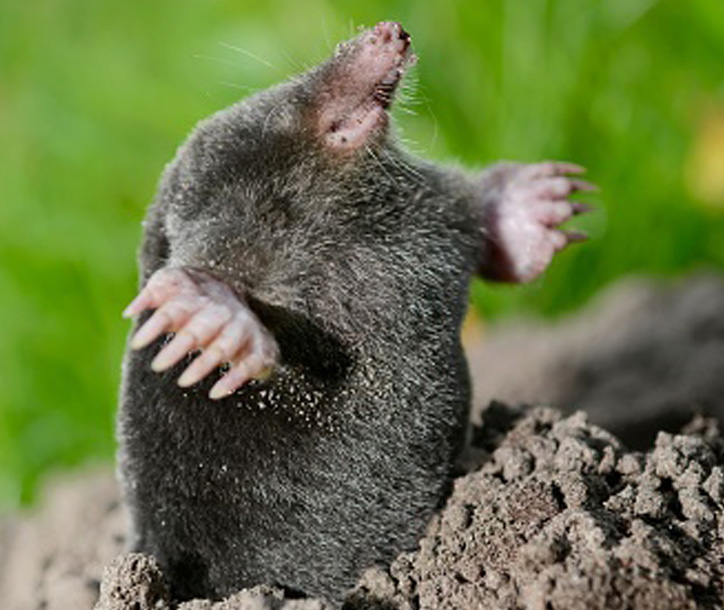Do you Have a Mole Problem?
We’ve been getting a lot of the calls in the past few weeks about mole activity at both homes and businesses. It’s common to have mole infestations throughout yards in the Pittsburgh area, but you can treat this problem yourself fairly inexpensively.
Why Are So There Many Moles in My Yard?
Signs that you have moles include surface tunneling activity or mounds of dirt on your lawn that look like little volcanoes. (You don’t need to see both tunnels and dirt mounds – if you see just one, you have moles.)
Moles are like every other animal – they’re looking for food, and they’re finding that food in your yard. They eat earthworms, which can comprise up to 90% of their diet. Earthworms are abundant in most soils, so that’s the perfect food source for these pests. (Many people are under the misconception that moles are looking for grubs, but that’s rarely true.)
What Kind of Damage Does Mole Activity Cause?
When moles are tunneling underground to look for earthworms, they destroy your plants’ root system, which takes away the plants’ food. Just one mole in your yard can cause quite a bit of damage.
I Have Moles in My Yard! What Should I Do?
If you have a mole issue, Superior Lawn Care recommends the following:
First, stamp down existing mounds and tunnels to make the area as flat as you possibly can. Then, other pests like voles will use the tunnels that the moles created, which is a great way for them to get around as they eat the roots and bulbs in your yard. (Moles can travel up to 18 feet in one hour!) When you find new, active tunnels, you should try to trap the moles. Most garden centers will carry three different kinds of traps:
- Spear Mole Trap
- Out O’ Sight Mole Trap
- NoMol Mole Trap
Talk to the folks who work at your local garden center to see which trap is best suited to your lawn. To be effective, traps should be placed in the largest and straightest existing tunnel. Setting more than one trap will increase the ability to catch the moles quickly.
Call Superior Lawn Care today to get a free estimate for one of our many residential or commercial treatment programs.



